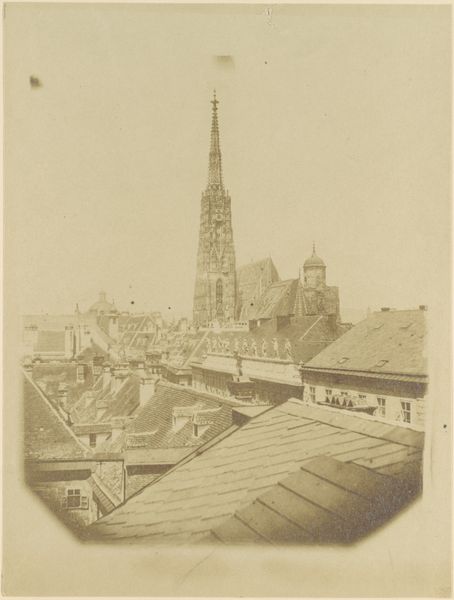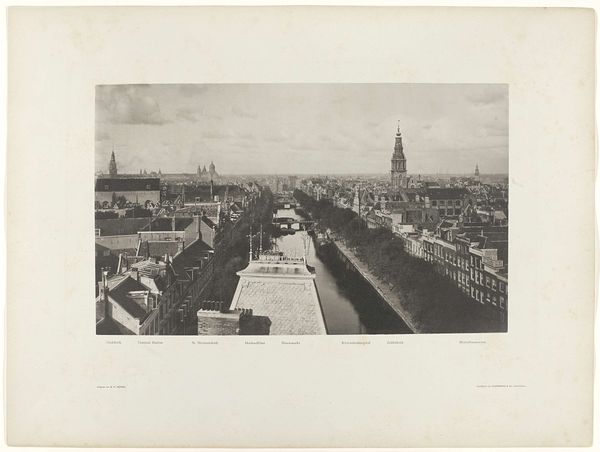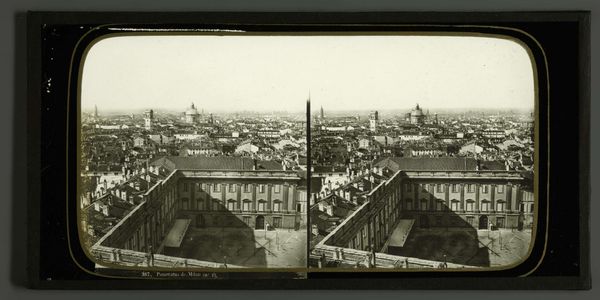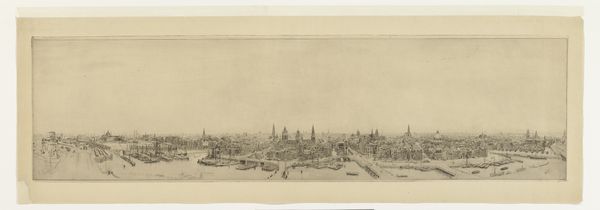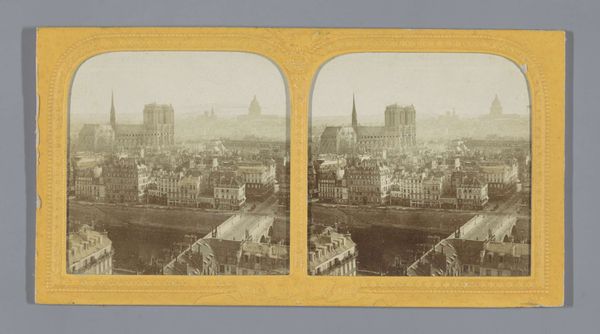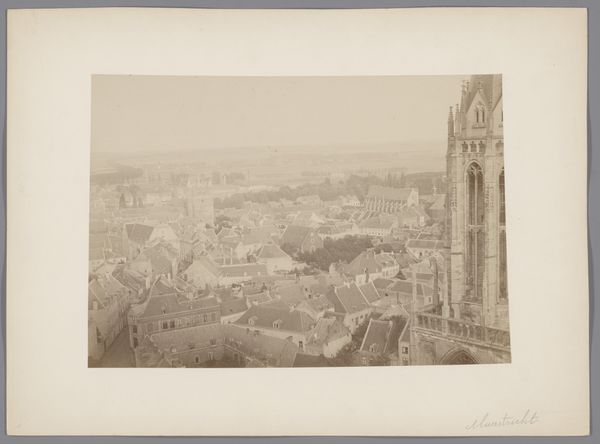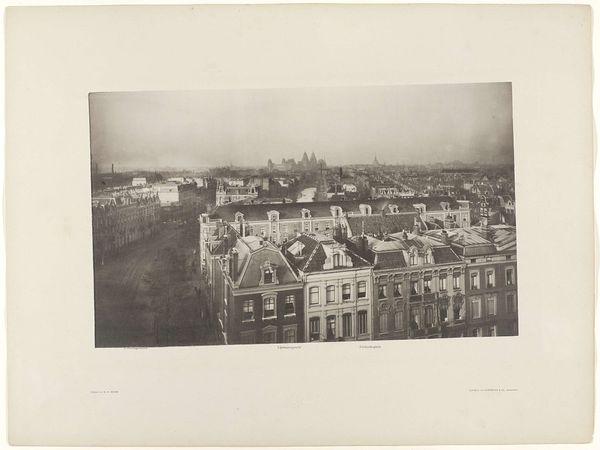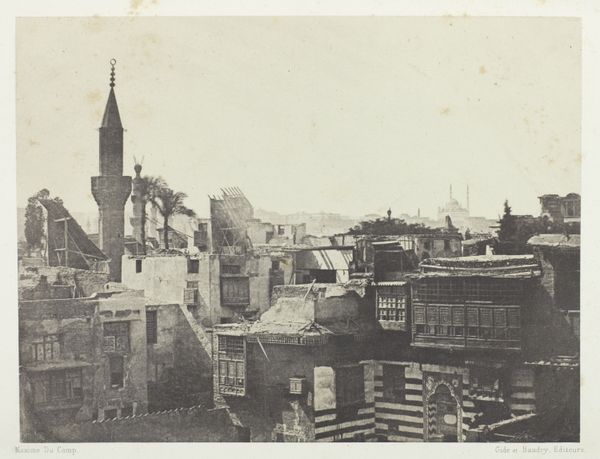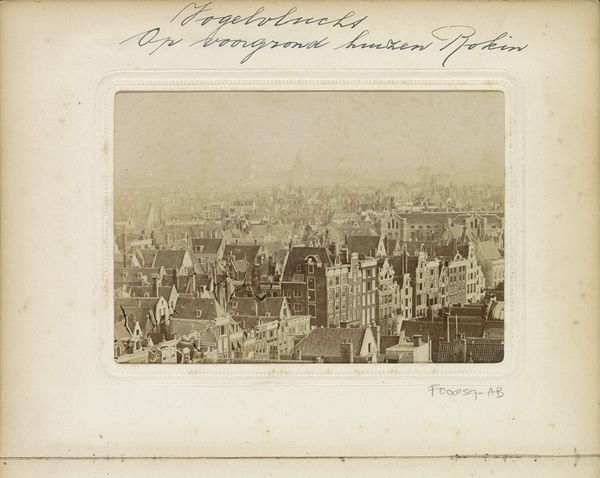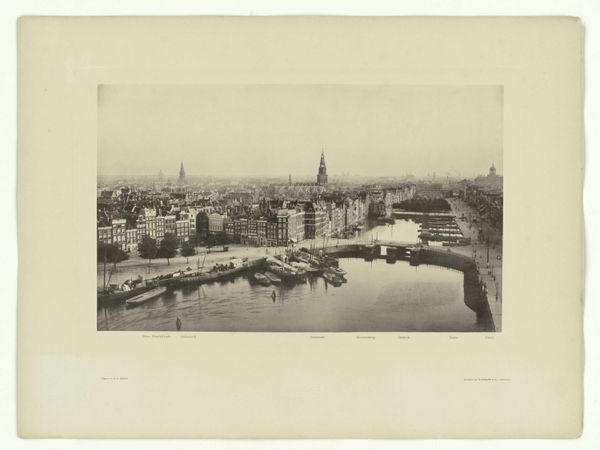
photography, albumen-print
#
landscape
#
photography
#
cityscape
#
albumen-print
#
realism
Dimensions: height 260 mm, width 207 mm, height 277 mm, width 367 mm
Copyright: Rijks Museum: Open Domain
Curator: Standing before us is "Gezicht op Milaan met de kathedraal," a captivating albumen print crafted between 1858 and 1893 by Alfredo Noack. Editor: The sepia tones create an overwhelming sense of looking at something past, frozen in time. It's almost melancholic; an aerial view but muted in affect. Curator: It’s a masterful landscape portrayal employing photography, documenting the city. Consider the socio-political conditions of the era—the rise of industrialization, urbanization—how might they have influenced the artistic eye selecting such a sweeping cityscape as its subject? The composition echoes a desire for order, perhaps even control. Editor: The density of the urban landscape—the sheer volume of rooftops spreading towards the distant cathedral— speaks directly to material realities. Think of all the raw materials, labor, the trade, required to raise a city on this scale. And photography itself was a nascent technology, requiring complex processes to develop images like these. Curator: The cathedral is not merely architectural ornamentation. As an ideological anchor, the prominent placement of such an important building forces a certain religious framework for the perception and experience of this industrialized urban center. We must consider this within ongoing debates about secularization in 19th-century European societies. Editor: It reminds me of discussions surrounding Walter Benjamin’s "The Work of Art in the Age of Mechanical Reproduction," challenging our perceptions of craft versus industrial means. Albumen printing involved a laborious hand coating, floating, and sensitizing process on paper. While this image seems reproducible, it still has very concrete, laborious beginnings that point toward value. Curator: Indeed, the albumen print process is a reminder that technological advancements are still inherently tied to material realities, whether visible or hidden. How does that influence our contemporary moment, now dominated by digital technologies and social justice conversations around representation? Editor: The question remains—can the value assigned to “high art” be expanded when understanding labor, means, and the material conditions under which they manifest? Curator: Absolutely. By contextualizing these images within complex societal structures, and examining the materials they contain, we better appreciate the nuances of historical and contemporary cultural narratives. Editor: I find that centering material investigations into artwork grants opportunities to deepen our understanding of social production that otherwise remain obscured.
Comments
No comments
Be the first to comment and join the conversation on the ultimate creative platform.
